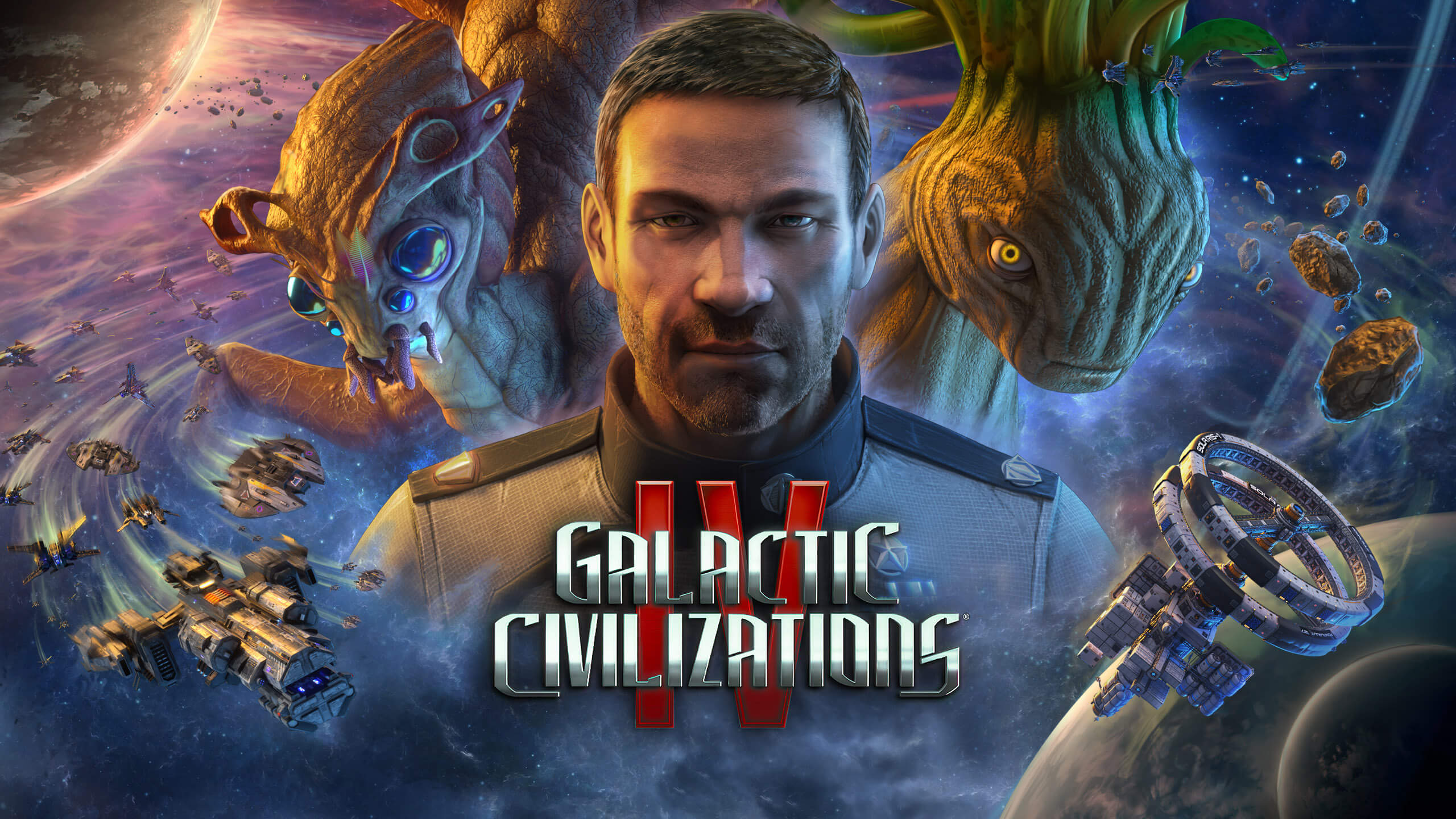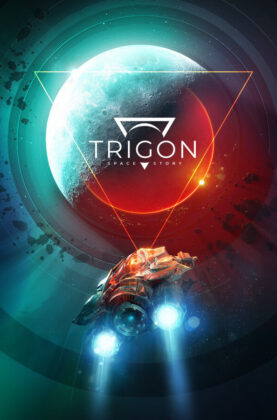
Galactic Civilizations IV Free Download
Galactic Civilizations IV Free Download Unfitgirl
Galactic Civilizations IV Free Download Unfitgirl I’ll be blunt: if I were to rank prominent space 4X games of the past decade, Galactic Civilizations IV would come in near the bottom of the list, even behind Galactic Civilizations III. It’s not a disaster – like the previous three Galactic Civilizations games, this is a decent, functional 4X space game – but its predecessors were good for at least a round or two before they wore thin due to the lack of an “X factor” to really keep me hooked. None of them stacked up to Endless Space 2, Stellaris, or even 1996’s Master of Orion 2, which each deliver more substantial variety, flair, polish and creative identity than any GalCiv game managed for me. I had hoped that GalCiv’s fourth iteration would finally find and deliver the spark that the series has been searching for. Instead, it’s had the opposite effect on me: After completing several playthroughs, its glaring design problems and balance issues are painfully clear, to an extent that I worry that Stardock won’t be able to pull it out of this tailspin and salvage its handful of smart ideas anytime soon. If the stars align I can see playing Galactic Civilizations IV and not having an unpleasant time, but it’s done so disappointingly little to keep up with the heights the rest of the genre has reached since 2015 that I’m usually wishing I was playing one of those instead. Upon hitting the new game button, you’ll be greeted with a generous selection of nicely animated space empires both familiar and original to the franchise. Unfitgirl.COM SEXY GAMES

There’s a decent array of colorful and bizarre alien species amidst the human and humanoid, with the terrifying Festron bugs or literal giant mantis shrimp standing out the most at first glance. Each race comes with a selected set of traits that (supposedly) dictate the style of play they lend themselves to, but you can customize a number of these bonuses to your liking. It’s also possible to make your own empire entirely from scratch. You’ll continue the customization spree right into your game details, where you’ll set up the size and qualities of the galaxy. There’s a respectable selection of options in all these areas, and Stardock is kind enough to give you a system specs suggestion when you start scaling up the settings to insane degrees (my measly 16GB of RAM and four CPU cores were half of what a “Galactic” size map suggests). I was constantly having to shift my perspective just to glean basic information and get all my commands through. Beyond the alien/empire selection, the most important cornerstone to this setup process are Sectors. By default, I was just playing with a couple of average-sized regions, but you can scale it up to your CPU-melting desires. By breaking the map up, Stardock’s stated intention is to dial down the amount of dead space and empty tiles we see between systems in previous GalCivs.
Your choice determines how you play and win.
It’s also meant to keep empires relatively contained to a smaller playing field in the early game, until a few technologies have been researched. Unfortunately, with the way things are currently balanced it completely fails at both of these goals, and it doesn’t take too many turns into a fresh campaign to see why. Arrayed before you is a grid of your starting sector, which contains your homeworld, shipyard, and a couple of starter starships. It can be hard to tell just what you have at a glance, as planetary icons and names tend to blot out the ships beneath them. Zooming out a little will shift objects to icons, but zooming out a little further than that will hide smaller ones. I was constantly having to shift my perspective just to glean basic information and get all my commands through. Just about every time I wanted to deploy survey ships I’d have to zoom in to click the ship underneath a planet banner, then zoom out to get a feel for the map layout, only to zoom back in a little for the anomaly icons to actually show. Even once you’re familiar with what the icons and tiles all represent and how to find them, it still proves to be an unclear and ugly mess to try and sift through. There are a lot of systems at play and information to keep track of in any 4X game of this scale, sure, but in Galactic Civilizations IV I frankly struggled to uncover the essential information I needed to manage them. Mafia III: Definitive Edition

Plenty of times I was having to mouse over a dozen or so tooltips to figure out the specifics of how some resources and statistics interacted. I’m still not convinced everything is there either, such as the exact impacts of citizen skills, and even after playing multiple games I still felt like I was winging it. To be fair, the rest of the initial experience was much smoother. Galactic Civilizations IV is a turn-based strategy game, so you have all the time you need to consider your moves and come to grips with things. This includes deploying the many fleets of starships you’ll be building. Combat is simply a matter of moving fleets onto the same tile as another fleet and then seeing the results. While you are given the option to see a cinematic view of the battle play out – which looks cool, but is prone to all sorts of camera issues and display bugs – there’s no influencing the outcome. All you can do is build your fleets and move them across the map, hoping that your fleet is bigger and more powerful when conflict happens. That’s fine, as this is a strategy game rather than a tactical one, but considering the impressive ship editor it feels like a missed opportunity. The colored blob that represents your empire’s sphere of influence will form through a combination of building starbases and colonizing planets. Starbases can be built anywhere, though they gather minerals and trigger the effects of precursor relics in their field of influence
Create your own history
Making tactical placement important. Planets, on the other hand, can have colonies built on them. But most colonies aren’t going to be all that impressive, as many planets lack the resources and space to be worth developing in full. In previous Galactic Civilizations games, you’d have to manage each of those worlds individually regardless of their quality, and that got tedious as your empire grew. So one of GalCiv IV’s new features that I’m fond of is the Core World system, which aims to mitigate all that micromanagement. Rather than force you to hand-craft each of them, unimportant colonies will instead transfer their resources and stats to the closest Core world (with increasing decay over distance). If a colony world becomes lucrative or of strategic importance, you can opt to install a governor and promote it to a Core world. This streamlines the process for when your empire gets massive and spreads across multiple sectors. Still, this means the early game narrows into a galactic land grab – which is true of most 4X games to some extent, but especially so here. If there are loose resources, floating relics, or even the most inhospitable rock with a mineral count on it, you’d best be setting up shop on it. Because if you don’t, then one of your AI opponents absolutely will. My first game (playing as the Terran Resistance) was going decently enough Mafia II

but I quickly realized just how outclassed I was getting in terms of production and territory relative to the neighboring Yor or Drengin empires. It turned out that I was being too selective with my colony ships, mostly focusing on claiming worlds and regions that I’d want to later convert to core worlds and fully build up. Merely a few turns later, I’d find all the other planets in that solar system sporting new colonies from the Drengin, who cared naught for anything except that they had claimed the territory. That leads me nicely into a major issue: the AI has no clue how to prioritize which planets to colonize and which are a waste of everybody’s time. Computer empires might see snapping up every unoccupied world that I hadn’t as the correct decision, but nearly all of those colonies only lasted a couple of turns before they belonged to me. Part of that was because they were left undefended, but oftentimes, I wouldn’t even need to fire a shot! During peacetime, those brand-new colonies were so deeply within my empire’s zone of influence and away from theirs that decay affected 100% of their resources. They literally did nothing for them, only to then have cultural rebellions that saw them joining my faction. So this actually worked out to my advantage, with the downside being it exposed the reality that my opponents have no idea what they’re doing. When it comes to war, territory control becomes even more annoying.
Even options for how the AI will use them
When it comes to war, territory control becomes even more annoying. You conquer a world by putting a fleet in orbit and, after a couple turns – depending on the colony’s strength and size – the planet will flip to the invader’s side. The colony itself can do nothing to stop this, and only other fleets can intercept and destroy the besieging force before the turn count runs out. However, “fleet” is a bit of an overstatement because you only need one single ship to take a non-core planet. It doesn’t even have to be a specialized battleship or transport; any ship will do. Core worlds at least require a ground invasion via transport and take longer to capture, but by nature they’re few and far between. This means that every single ship, big or small, is a threat. This results in wars becoming an endless game of whack-a-mole in which you’re frantically trying to deploy enough fleets and hopefully have enough sensor coverage to stop every single ship from getting past your front lines. Of course, it’s not exactly a huge deal should they succeed, as you can just as easily undo any damage they inflict with your own ship. It’s just a constant annoyance, and it means that there’s a huge amount of tedious trawling through vast sectors of space until all opposition is quashed. Another idea that doesn’t pan out is Sectors, which might break up the galactic map in theory, but in practice? Mafia II: Definitive Edition

Every sector is still thousands upon thousands of tiles to manage, even on smaller map sizes, so the empty space problem is still very much in play. And if a war does happen to spread across multiple sectors, this just means there’s a very narrow funnel – just one tile – through which reinforcements can arrive. That sounds like it could get tactically interesting, but the substreams between sectors cannot be blockaded: even if you plant a starbase on either side of the stream, other empires can just fly their fleets right past your defenses if they so choose, and the whack-a-mole game across galactic miles resumes in earnest. All your efforts at tactically controlling the space accomplished was to give you vision and a staging ground for launching an attack of your own; it’s a good start, but it makes the entire concept of sectors feel pointless. With a grid size this vast, Galactic Civilizations IV needed something like the hyperlanes of Stellaris or Endless Space for Sectors to work; without them it’s just more space. Rather than solve the problems of GalCiv III, Stardock has only amplified them. In Galactic Civilizations IV, building tall was never an option Do Sectors at least buy you time in the early game to get established before too many rivals are knocking at your door? Not really! The technology to see and travel between sectors is fairly low tier, so it’s usually not hard to unlock.
Technology choices are randomly selected from what’s available when it’s time to research something, so you might get unlucky… but you can reroll the choices at the cost of a slight penalty to their research rate, so not having the appropriate technology pop up when you want it is only a mild inconvenience. What’s more, there’s a trait that you can simply start with to be able to use them anyway (which the Navigators get for free). At absolute best, it might keep your unluckier opponents low in the opening land grab, but I sincerely doubt you’ll be able to fully capitalize on that before new challengers arrive to your sector. The way things are balanced, Galactic Civilizations IV inadvertently discards a staple tactical choice of 4X strategy games regarding empire building: you can choose to “build wide,” meaning you spread out many colonies across huge territories, or “build tall,” where you focus your efforts on a small number of hyper-developed core worlds. That decision leads to some very different playstyles and adds to a game’s replayability. But in Galactic Civilizations IV, building tall was never an option. No matter how much you micromanage the efforts of a core world or two, that can’t compete with having the input of potentially dozens of colonies added to it. The inability to actually set up chokepoints and really maintain your territory only compounds that frustration.
Add-ons (DLC):Galactic Civilizations IV
| – | – | – | – | – | – |
| – | – | – | – | – | – |
| – | – | – | – | – | – |
| – | – | – | – | – | – |
OS: Windows Vista, Windows 7 SP1, Windows 8/8.1 / Windows 10-11 (32/64bit versions)
Processor: Intel Core i3 @ 3.0 GHz or AMD Ryzen 3 3300X @ 3.0 GHz
Memory: 8 GB RAM
Graphics: Nvidia GTX 1060-4GB or AMD RX 580 (4 GB VRAM with Shader Model 4.0 or higher)
DirectX: Version 11
Network: Broadband Internet connection
Storage: 14 GB available space
Sound Card: DirectX Compatible Sound Card with latest drivers
Additional Notes: Windows-compatible keyboard and mouse required, optional Microsoft XBOX360 controller or compatible
Requires a 64-bit processor and operating system
OS: Windows Vista, Windows 7 SP1, Windows 8/8.1 / Windows 10-11 (32/64bit versions)
Processor: Intel Core i5-8250U @ 3.0 GHz or AMD Ryzen 5 3500U @ 3.2 GHz
Memory: 16 GB RAM
Graphics: Nvidia GTX 1080 or AMD RX 6700-XT (6 GB VRAM with Shader Model 6.0 or higher)
DirectX: Version 11
Storage: 14 GB available space
Sound Card: DirectX Compatible Sound Card with latest drivers
Additional Notes: Windows-compatible keyboard and mouse required, optional Microsoft XBOX360 controller or compatible
NOTE: THESE STEPS MAY VARY FROM GAME TO GAME AND DO NOT APPLY TO ALL GAMES
- Open the Start menu (Windows ‘flag’ button) in the bottom left corner of the screen.
- At the bottom of the Start menu, type Folder Options into the Search box, then press the Enter key.
- Click on the View tab at the top of the Folder Options window and check the option to Show hidden files and folders (in Windows 11, this option is called Show hidden files, folders, and drives).
- Click Apply then OK.
- Return to the Start menu and select Computer, then double click Local Disk (C:), and then open the Program Files folder. On some systems, this folder is called ‘Program Files(x86)’.
- In the Program Files folder, find and open the folder for your game.
- In the game’s folder, locate the executable (.exe) file for the game–this is a faded icon with the game’s title.
- Right-click on this file, select Properties, and then click the Compatibility tab at the top of the Properties window.
- Check the Run this program as an administrator box in the Privilege Level section. Click Apply then OK.
- Once complete, try opening the game again
NOTE: PLEASE DOWNLOAD THE LATEST VERSION OF YUZU EMULATOR FROM SOME GAMES YOU MAY NEED RYUJINX EMULATOR
- First you will need YUZU Emulator. Download it from either Unfitgirl, .. Open it in WinRar, 7ZIP idk and then move the contents in a folder and open the yuzu.exe.
- There click Emulation -> Configure -> System -> Profile Then press on Add and make a new profile, then close yuzu
Inside of yuzu click File -> Open yuzu folder. This will open the yuzu configuration folder inside of explorer. - Create a folder called “keys” and copy the key you got from here and paste it in the folder.
- For settings open yuzu up Emulation -> Configure -> Graphics, Select OpenGL and set it to Vulkan or OpenGL. (Vulkan seems to be a bit bad atm) Then go to Controls and press Single Player and set it to custom
- Then Press Configure and set Player 1 to Pro Controller if you have a controller/keyboard and to Joycons if Joycons. Press Configure and press the exact buttons on your controller After you’re done press Okay and continue to the next step.
- Download any ROM you want from Unfitgirl, .. After you got your File (can be .xci or .nsp) create a folder somewhere on your PC and in that folder create another folder for your game.
- After that double-click into yuzu and select the folder you put your game folder in.
- Lastly double click on the game and enjoy it.



![Community Service [Future!Phantom] Free Download Unfitgirl](https://gopcgames.com/wp-content/uploads/2022/08/Community-Service-FuturePhantom-Free-Download-Unfitgirl-1-277x420.png)







![Luke’s Way [Evil User] Free Download Unfitgirl](https://gopcgames.com/wp-content/uploads/2022/08/Lukes-Way-Evil-User-Free-Download-Unfitgirl-4-277x420.png)



















